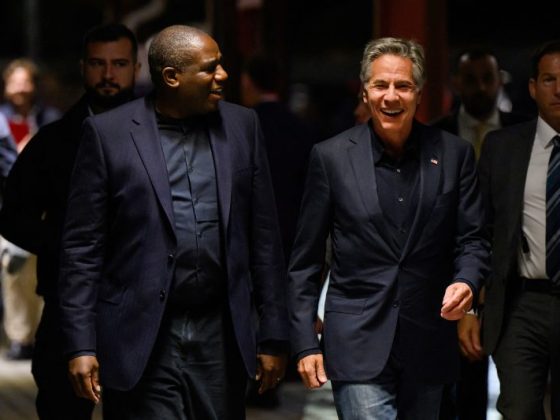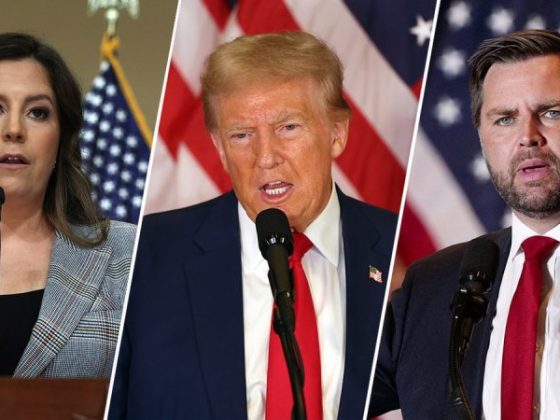PHILADELPHIA — Ever since President Joe Biden ended his reelection campaign, former president Donald Trump has been sour and on the defensive. His new opponent, Vice President Kamala Harris, made clear in their scorching debate here Tuesday night that she will spend the next two months trying to keep him there.
If debates matter, this one should. But the overriding question in such a divided country is whether it will.
The final weeks of the campaign promise to be as contentious as the 90-minute encounter at the National Constitution Center and hosted by ABC News, with polls showing no clear leader and a nation hanging nervously on the outcome. If there were doubts about Harris’s ability to weather what will be a brutal stretch, they were at least partially answered with her sharp and steady performance on Tuesday. But given the state of the race, neither candidate can afford missteps or mistakes.
Harris, who was under pressure to define herself more fully to voters who barely know her, did so less by outlining her positions on policies, though she did some of that, and more by being vigorous and unrelenting in attacking Trump. She played prosecutor from start to finish. She called him a threat to the future of the country if he is returned to the Oval Office. She portrayed him as obsessed with himself rather than the people he seeks to serve. She detailed his criminal convictions and the indictments against him. She even needled him about crowd sizes. It was a dominating performance. Trump has not been challenged so directly and so consistency in his political life. No wonder he misses Biden.
Trump was ill prepared for this Harris. He previously had disparaged her personally, questioning her intelligence and her identity. When cornered at the debate, he used the issue of immigration as his crutch to counterattack, but he also went on numerous flights of fancy and outright lies, without success. His most loyal supporters will no doubt be happy with how he handled himself, with his relentless attacks on the record of Biden and Harris — especially on the economy, immigration and foreign policy.
But others, including some Republican elected officials, will see the degree to which he fell short. Maybe Trump recognized that as well. He showed up in the spin room after the debate, a rarity and an obvious sign of his need to try to make the case to reporters that he had failed to make on the debate stage.
His strategy, to the extent he had one, seemed to be to appeal only to his loyal base. Given how close the contest between the two is, he seems to be betting that’s all he will need to win in November. Harris, with her turn-the-page appeal, appeared more interested than he in expanding her support just enough to squeak through in November.
Ahead of the debate, much of the commentary focused on what she needed to do and the risks for her of a weak performance. By answering those questions on the strength of her presentation, she now will try to keep the focus on him. If this debate is any indication, the next months could find him in a constantly sour mood.
Barring a joint decision by Trump and Harris to meet for a second debate — Harris’s camp said Tuesday night they wanted one — Tuesday’s encounter could be the last major event of the campaign. As such it marked a pivot point in the election after an unprecedented two months that saw Biden end his candidacy, an assassination attempt against Trump, two upbeat national conventions and now the first head-to-head encounter between the two nominees.
From here forward, amid candidate rallies and a barrage of messaging, the campaigns will begin to shift their emphasis to mobilizing voters. Hundreds of millions of dollars will be poured into television and digital advertising, but with early voting starting in some states later this month, the priority now will be on banking votes ahead of Election Day and then maximizing overall turnout on Nov. 5.
But while their campaigns focus on voter turnout, the two candidates will wage an extended version of what Americans saw on the debate stage Tuesday night. Trump has proven resilient politically despite years of lies, an attempt to subvert the 2020 election and his undisciplined persona. Harris, new to the presidential campaign trail and less well known, must continue to demonstrate her durability.
But Harris has another mission, and it was on display Tuesday night, which is to continue to heighten fears about another Trump presidency. Democratic strategists say the more the former president is in the spotlight, the better Harris’s chances.
Trump did nothing to offer voters a new portrait. This was the same Trump who voters have seen for nearly nine years — an attack politician, one who thrives on personal grievance. He is as well defined as any politician can be, for those who love him and those who loathe him. The act is old — and to about half the country, it is disqualifying. Yet with nearly all of the other half in his corner, it has been enough to keep the race as close as it is.
It was Harris who perhaps surprised people on Tuesday. Criticized for failing to do many interviews, questioned about her ability to hold her own in unscripted moments, she made an impression on those who watched, especially women, according to one Democratic strategist who observed a dial group of voters. In the weeks ahead, Harris’s support among women could become the decisive factor in the outcome of the election.
The turning point in the debate came when the issue of abortion was raised. Harris had deflected an opening question about whether Americans are better off today than they were four years ago — the classic question posed by Ronald Reagan in his 1980 debate with then-incumbent Jimmy Carter. Instead of answering directly, she ducked the answer by laying out policies she said would help the middle class.
But when the moderators — David Muir and Linsey Davis — turned to abortion, she found her voice and apparent newfound confidence. From that moment on, she was in command. Trump, despite repeated attempts to unnerve her, failed to do so.
Still, this was but one moment in a campaign in which so many voters seem locked into their choice. For all the upheaval of the past two months, and for all that Trump has said and done, including his felony convictions and personal attacks on Harris, the 2024 election could hardly be closer.
With Biden’s departure, Harris went from understudy to lead Democratic actor overnight and rode a wave of enthusiasm out of her convention in Chicago last month. Beginning at a time when Democrats feared Biden could not win the election, Harris has moved the polls by four to five points in all the battlegrounds, according to The Post’s poll average.
She has done a good job of consolidating Democrats around her candidacy, in contrast to Biden. Yet all that accomplished was to turn the 2024 election into a dogfight.
Nationally, with eight weeks remaining, the contest is a statistical dead heat. The seven battlegrounds that will decide the outcome — Michigan, Pennsylvania, Wisconsin, North Carolina, Georgia, Nevada and Arizona — are seemingly even tighter, based on poll averages by four different organizations: The Post, the New York Times, RealClearPolitics and 538.
North Carolina and Nevada are tied, according to these averages. Harris is up an average of two percentage points in Michigan. Georgia and Arizona are somewhere between tied and Trump up by a percentage point. Pennsylvania, which many analysts see as the key to the election, shows Harris with a lead of one to two percentage points.
The only battleground state where one candidate has a lead of more than two percentage points on average is Wisconsin, where Harris has on average a three-percentage-point edge. But in four of the past six elections in Wisconsin, including 2020 and 2016, the winner’s margin has been a percentage point or less, suggesting a down-to-the-wire contest there.
For Democrats, the mere fact that they are back in the race has been a morale boost. But there’s a warning from past elections that continues to give them pause. In both 2016 and 2020, Trump outperformed the polls. In his first campaign, that was enough to win. In 2020, it wasn’t.
In the three northern battlegrounds, pre-election polls understated Trump’s eventual support by three points in Michigan, three points in Pennsylvania and five points in Wisconsin. At the same time, the RealClearPolitics averages show Trump running ahead of his support this year compared with four years ago.
Democrats are judged to have a powerful ground game, as they proved in the 2022 midterms when they performed far better than polls and predictions had suggested. Their get-out-the-vote operation is fueled by thousands of volunteers, some working at the direction of the campaign and others taking the initiative by outside groups or on their own.
But when Trump is on the ballot, he has proven to be a powerful motivator for the Republican base, even in the absence of state-by-state infrastructure. Democrats know they have to work to get their voters to the polls and worry that Trump’s supporters will get there on their own.
In an election this extraordinarily close, everything matters — debates, messaging, advertising, enthusiasm, where and when the candidates campaign. Harris has claimed she is the underdog and given the surprise Trump pulled off in 2016, that’s probably the right posture to take. She came to the debate ready to prove something and did, and on the biggest stage to date. But she cannot let up. There is no margin for error.


